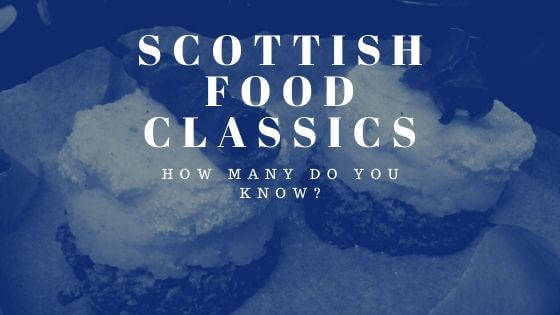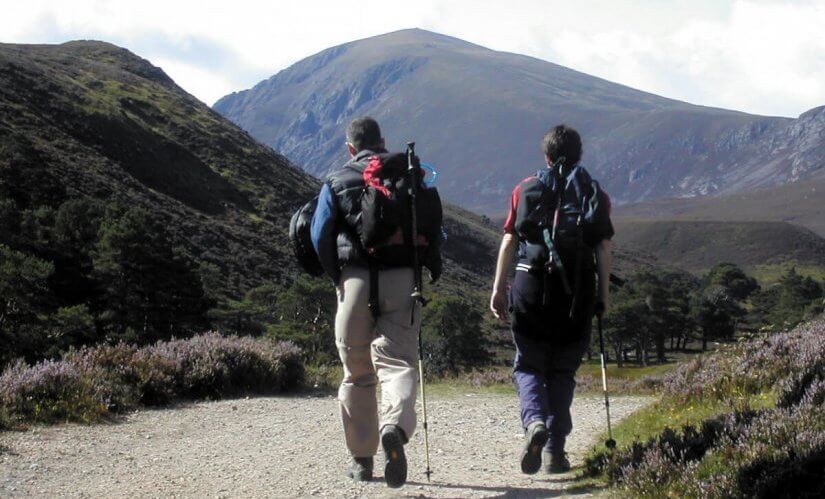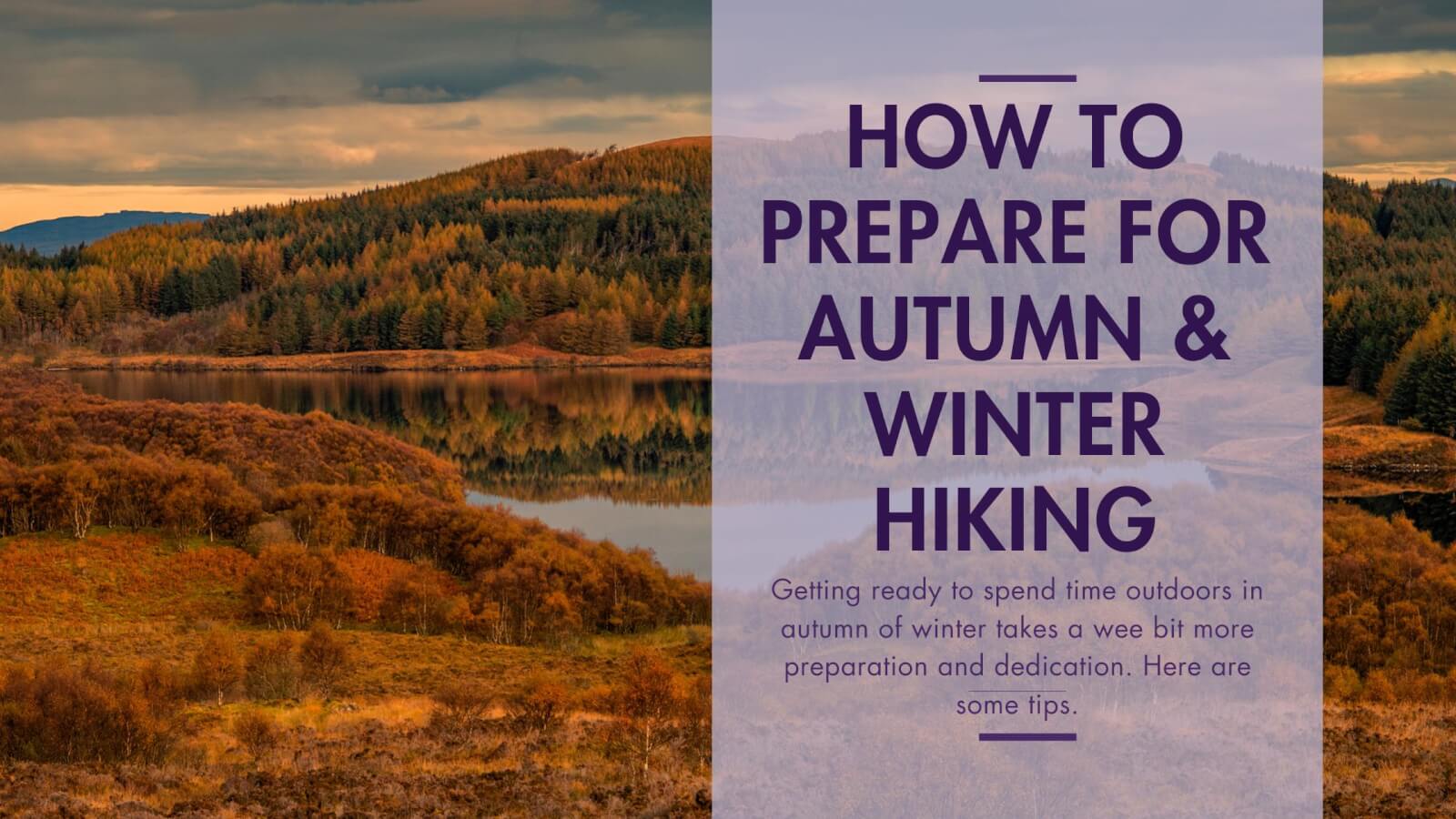Learning about Scotland: from the experts
When you go travelling one of the things you’ll find most interesting is to explore the local cuisine. This is no less exciting in Scotland. It’s not all haggis here! It can even be an adventure even for visitors from across the border! Here are some Scottish food classics for you to explore.
How many of these Scottish classics are familiar to you?
1. Haggis
This has to be one of the most famous Scottish food classics available. I’m not sure it’s quite on a par with “Scotch”, whisky or malt, all the same thing though the name varies, depending on who you speak to. Haggis exports have been more limited though and US customs regulations have meant that we’ve been unable to spread the haggis far and wide across the US. It doesn’t always travel well. One businessman who flew from the Highlands to Birmingham was pulled to one side and accused of carrying explosives (which turned out to be his haggis).
Modern squeamishness puts a lot of people off trying haggis, but it is quite environmentally friendly in its way. It uses parts of a sheep that might otherwise be thrown away. A traditional haggis is made with “Sheeps ‘pluck’ (heart, liver, and lungs), minced (ground) with onion, oatmeal, suet, spices, and salt, mixed with stock, and traditionally encased in the animal’s stomach and boiled” Doesn’t sound appetising – but tastes delicious.
We normally bake our haggis here as we find it makes the haggis more succulent and less greasy or less soggy. Or alternatively we make haggis stacks, as below. Easy but impressive way to serve up haggis. Check out our blog on haggis and bagpipes
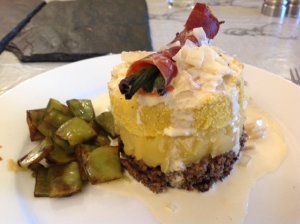
Haggis stacks: a round of haggis, a round of neeps topped with a round of mashed potato with green beans wrapped in prosciutto and drizzled with whisky and mustard sauce
2. Neeps and Tatties
A lot of visitors get very confused by the abundance of Scots words we still like to use liberally in everyday speech.
“Neeps” are Scottish turnips (what are known as the vegetable Swede in England). Try describing a “neep” to a foreign visitor. Most have no idea what you’re talking about and may not even be familiar with them as human food in their own country. Some think of them only as animal food and to be fair you do often see them liberally scattered across the fields in winter to feed the sheep and cattle.
“Tatties” – potatoes
The Scots, just like the Irish, love their potatoes. Mashed, fried, boiled – all forms of potato are good and often appear on the plate if you eat out in Scotland – far more common than rice or noodles, much to the horror of our Asian visitors.
3. Porridge
 Porridge or ‘Parritch’ is a favourite breakfast here in Scotland. It’s very similar to what the Americans call oatmeal, except that porridge can also be made with rolled oats. Traditionally porridge is made only with oatmeal, water, and salt. Ours here at Fraoch Lodge is a wee bit less traditional.
Porridge or ‘Parritch’ is a favourite breakfast here in Scotland. It’s very similar to what the Americans call oatmeal, except that porridge can also be made with rolled oats. Traditionally porridge is made only with oatmeal, water, and salt. Ours here at Fraoch Lodge is a wee bit less traditional.
Porridge recipe at Fraoch Lodge:
1 big mug of oats, water, and milk. Heat at a medium-low until thick and creamy. That’ll do about 4 grown adults alongside some honey, fruit compote, chopped fresh fruits and maybe even some home-made granola on top. The consistency is up to you, lessen or add liquid to your preference.
4. Whisky
 To put it simply, Scotland and the Scots take massive pride in their whisky, and why not? There are around 120 whisky distilleries all over Scotland, and all have their unique designs and flavours. Notice the difference in the spelling of the word, some people, like our Irish and American brothers and sisters, include an extra ‘e’ to make whiskey. It doesn’t make too much of a difference to the item that it describes, but just to keep in mind that there’s probably a Scot who won’t hesitate to correct you.
To put it simply, Scotland and the Scots take massive pride in their whisky, and why not? There are around 120 whisky distilleries all over Scotland, and all have their unique designs and flavours. Notice the difference in the spelling of the word, some people, like our Irish and American brothers and sisters, include an extra ‘e’ to make whiskey. It doesn’t make too much of a difference to the item that it describes, but just to keep in mind that there’s probably a Scot who won’t hesitate to correct you.
The beverage itself is not just enjoyed straight from the bottle with some whisky rocks on a cold Scottish evening by the fire, it can also be used to flavour both sweet and savoury recipes. Here at Fraoch Lodge, we’ve used our whiskies to flavour our home-made orange marmalade down to the delicate and creamy whisky sauce that is perfectly paired with the Haggis stacks pictured above. It is a more versatile item than you think and well-beloved by the Scots, so to bring one (or two) bottle home with you after your visit certainly wouldn’t hurt. (Whisky sauce is great with pan fried salmon too.)
5. Caramel Wafers
![]()
These are not just a Scottish classic, but a lunchbox must-have for kids and adults everywhere. There are many versions of this chocolate-caramel snack around the world but this one certainly has a spot in our hearts that remind us of home. Tunnocks (the family-run business based in Scotland) has been a beloved provider of said snacks since the 1890’s. Its sticky-sweet caramel alongside the crunchy wafers dipped in milk chocolate is an unbeatable feel-good snack whether you’re walking up a hill or walking the dog. I for one can’t settle for just one piece! Now that you mention it… *opens up a caramel wafer* Also famous in the children’s book series: Tom Gates by Liz Pichon.
6. Lorne Sausage

This magical meaty invention will break your sausage expectations. The sausage is thought to be named after Lorne in Argyll, Scotland… and it is square. Yeah, that’s right, it’s a square sausage. This and ‘tattie scones’ are what makes a Scottish breakfast so distinct from all the others around the UK. It’s got the usual mix of minced pork and beef, alongside rusk and spices like a normal sausage, apart from the fact that it’s square. It tastes delicious by the way, don’t knock it ’til you try it! But also, it fits so perfectly well inside two pieces of bread. Some even have a piece of black pudding in the middle, and if you don’t know about black pudding yet, keep scrolling.
7. Battered Mars bar
Now, I know what you’re going to say… “What in the world were the Scots thinking?!” But hear us out, it may just change your life. The battered Mars bar is what it says in the carton, it’s simple and yet so special. Just get your chocolate bar of choice, (yes, it doesn’t always have to be a Mars) dip in the batter and deep-fry in vegetable oil.
A few tips to get the best result possible:
- Keep the chocolate bar in the fridge before dipping and frying, it helps it melt a little bit slower so you can keep frying it just that little bit longer for an extra crunch.
- The batter shouldn’t be thin, make sure that the batter coats the chocolate generously otherwise it may puncture and all the gorgeous melted chocolate will ooze in the pan instead of your mouth.
- Don’t fiddle with it too much once it’s dipped. Leave it alone until you see the colour changing on the batter, this helps create a stronger wall between your teeth and the molten chocolate inside.
- Speaking of oozing, keep in mind that the chocolate is completely melted and is hot, though tempting to take a big bite, there’s nothing worse than having a burnt tongue. Savour it like how you would a McDonalds Apple Pie.
When you discount all the calories and potential risk of going up a clothing size, it is well worth it.
8. Ecclefechan Tart
Gat ye me, O gat ye me,
O gat ye me wi’ naething?
Rock an reel, and spinning wheel,
A mickle quarter basin:
Bye attour my Gutcher has
A heich house and a laich ane,
A’ forbye my bonie sel,
The toss o’ Ecclefechan. The Lass O’ Ecclefechan a poem by Robert Burns 1795

First things first, if you’re pronouncing the name of this tart as if you’re gathering phlegm and then deciding to swallow it, you’re probably pronouncing it right. This tart, otherwise known as the ‘Border Tart’ is named after a village in Dumfries and Galloway, south of Scotland. The texture of this one resembles a lovely pecan tart except with walnuts alongside other flavours too, like cinnamon, lemon and raisins. It is considered a substitute for its not too distant English cousin, the mince pie, but instead of just being allowed to consume it during Christmas, the Ecclefechan is available all year round.
I’m not going to lie to you, I was first dubious when I was served it on a plate with a small pot of cream beside it but by God, when I took my first bite, I did not care what it looked like. It’s a taste that I can only describe as Ecclefechan and it blew my mind. I prefer this tart with custard for sure, but you can have it with cream (whipped or not), ice cream or custard.
If you happen to come across a cafe that serves this beauty, don’t hesitate, just get it. If it’s not to your palate, at least you’ve tasted a bit of Scottish history.
9. Tablet
 No this is not medicine, nor is it a piece of technological gadget. It’s a super sweet Scottish treat! A little disclaimer, one must defer from giving to already hyperactive children, it may cause carnage.
No this is not medicine, nor is it a piece of technological gadget. It’s a super sweet Scottish treat! A little disclaimer, one must defer from giving to already hyperactive children, it may cause carnage.
This piece of confectionary is 85% sugar, so you don’t need a lot to feel that rush. It’s got a grainy yet melt-in-the-mouth, buttery texture and also has a wide variety of flavours, i.e. whisky! Tablet is not quite as soft as fudge but not as hard as a hard-boiled sweetie. It’s super simple to make and if you click the link in the title, you too can make this simple yet irresistible treat for you or your sweet-toothed friends!
Ye cannae complain!
10. Shortbread
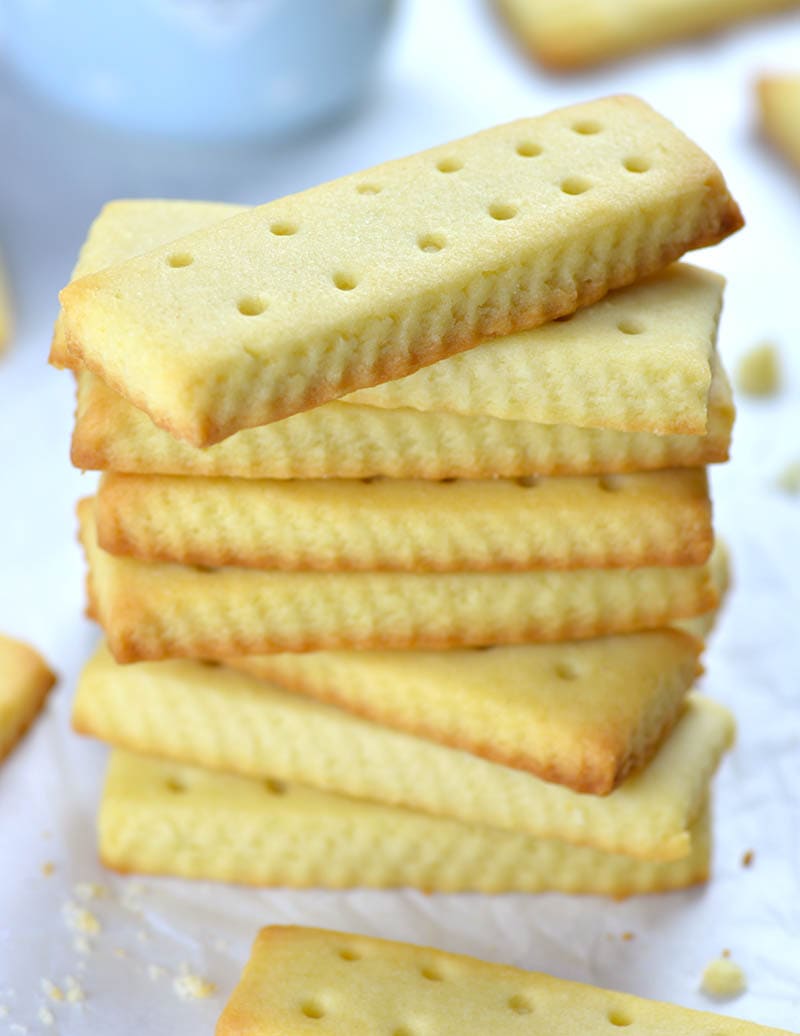
classic shortbread
Shortbread… where do I begin? It’s neither short nor is it a bread, but is more of a crumbly, buttery biscuit. It is prominent in most Scottish households and Scottish supermarkets, as well as tourists who’ve just come from Scotland, will find themselves with boxes and boxes of Shortbread to give to their friends. Some in tins, some in boxes, but you can be sure that it’s either got a Scottish terrier in front or some sort of tartan design.
This historic beauty of a biscuit dates back to the 12th century and was said to be Mary Queen of Scots’ favourite. It is a staple for afternoon teas and are available in most cafes. It is a versatile piece that can be flavoured to your liking, such as chocolate and cherries. Here at Fraoch Lodge, we make our Lavender shortbread for when we have a lot of Lavender kicking about in the garden. When dipped in dark chocolate and sipped with tea, it is a divine thing to have on the palate. Click on the link in the title to make it yourself!
11. Irn Bru
Apart from the Whisky, the nation would describe this orange-coloured carbonated soft drink as “Scotland’s other national drink.” I’m not a big fan of this particular drink myself but will drink it if given no other choice. My Scottish friends are adamant that I’m crazy to not like their “other national drink” but I’m sure I’m not the only one. I would still be careful about turning a can down though if you’ve been offered… the identity of this drink is so deeply rooted within the Scottish psyche that you might well cause offence.
It was initially named “Iron-Brew” but was not put up for sale until after health allegations were cleared up. Basically, the English thought that the drink itself had iron in it. The title changed to “Irn-Bru” in the year 1946. It’s popularity shot up after the wartime as they correlated their advertising to the comic strip “Adventures of Ba-Bru”. It was considered so outrageous that the style of advertising is still used today. Have a click on the title to see some advertising hilarity!
12. Fish Supper

Fish And Chips Recipe — Dishmaps
The fish supper is not merely a foodstuff in Scotland, it is truly a tradition. It would almost be a sin to come here and not have a fish supper for one of your meals. Fish, usually haddock, was one of the main food sources during wartime Great Britain. Paired with chips (fries to our American readers) it managed to keep the population of Britain somewhat sustained. Fish and Chips is now considered a staple, or comfort food. After a long day out on the hills, or after a tiring day out climbing, the thought of having a fish and chips at the pub is as comforting as the thought of a warm bath.
Thinking of the crispy batter surrounding the flaky fish fillet inside is enough to get your feet moving through the hardest of times. Truly a shame if you don’t like fish.
13. Black Pudding
Stornoway Black Pudding – Black Pudding – John Davidsons …
Okay, I have been asked this many times before, “Why is black pudding called a pudding?” We realise that the word ‘pudding’ makes one imagine a soft and creamy dessert as opposed to blood sausage. Yes, blood sausage. It was a way for our ancestors to use every single part of the kill. Then nothing would go to waste. The blood of the animal after it’s been killed doesn’t keep for very long. This way they could make it into something tasty. Now, this particular piece isn’t just of Scottish origin but has been popular all around the United Kingdom and Ireland. It is one of the many components of any Scottish, English and Irish breakfasts.
The taste is rather distinct and can only be described as black pudding. It can be grilled, fried, baked or boiled in its skin. Before you knock it down, do give it a wee try. I can say from personal experience that this ‘pudding’ is particularly delicious.
Stornoway Black Pudding is said to be the best. On one of our trips to the Western Isles, one of our clients was fixated on picking up some black pudding to take home before we left Lewis. (She succeeded.)
14. Cullen Skink
The Royal Burgh of Cullen in Moray, Scotland has stamped their name on this particular dish after having created it as early as the 17th century. Its main ingredients are smoked haddock, potatoes and onions. It’s usually served hot as a starter dish for posh meals. Or you can also have it with some lovely fresh bread as a hearty lunch.
It’s closest relative dish is the American clam chowder. Cullen Skink has a more distinct taste though because of the smoked haddock. I, for one, love a good Cullen Skink, it’s hearty, warm and full of flavour. Click on the title link. You can have a hand at making it yourself, but beware, the fish smell is a strong one. We found a recipe for cullen skink pie and cullen skink tart, both of which are out of this world. We’ll share on our recipe blog!
15. Macaroni Pie
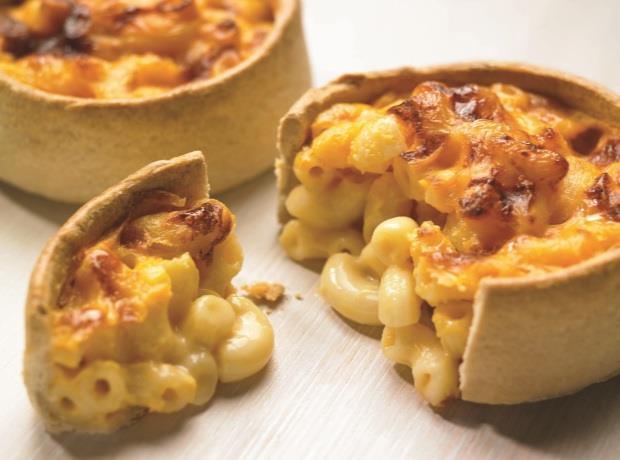
Macaroni pie
Everyone knows the good old mac n’ cheese, with its variations from all over the world, heck, even your own mother has her own take on it. The Scot’s macaroni pie is what it says on the tin. It is macaroni and cheese but within a Scotch pie crust. You really think this dish could still use more carbs on top of the pasta: *not*.
Needless to say, it’s a filling dish if one needs to bulk up. It’s also a great way to serve up mac n’ cheese in a bowl you don’t have to wash.
We’re sure that there are plenty more we’ve missed in this list. We’re working our way into tasting everything about this beautiful part of the world. What’s your favourite?
Additional options
Some twisted versions – Can’t wait to try some of these. We might even practise for our own St Andrew’s. What do you fancy?


